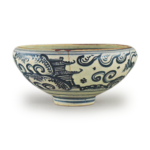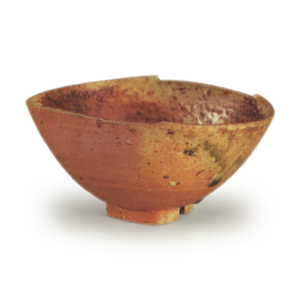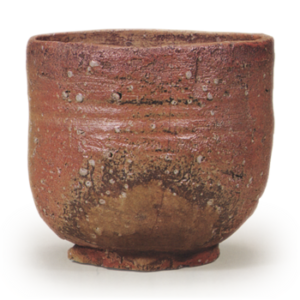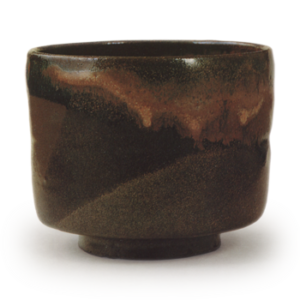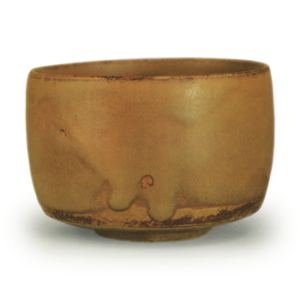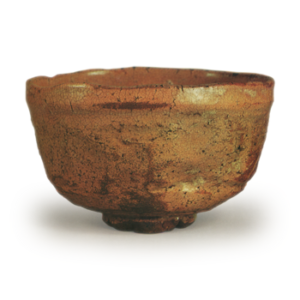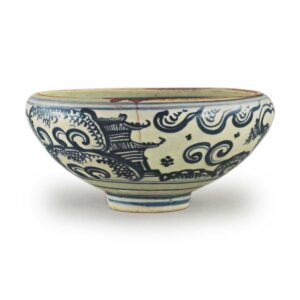
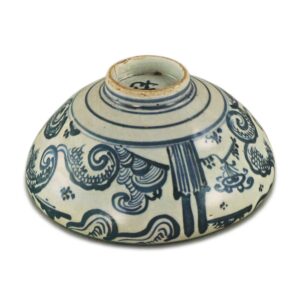
Height: 7.0-7.1cm
Diameter: 13.0-13.6cm
Outer diameter of foot ring: 5.0cm
Height of foot ring: 1.2cm
Although there are more of the undo-te tea bowls with underglaze blue designs than the old red-glazed ones, there are still not many of the iron bowl-shaped hachinoko, and in the Taisho Meiki Kan (A Guide to Famous Tea Bowl of the Taisho Period) all the undo-te tea bowls that are listed are cylindrical, and even the ones that are not listed are mostly cylindrical. The same is true of the pine, bamboo and plum designs that are used as replacements for the underglaze blue designs. This bowl is one of the few tea bowls of its kind, and its decoration is also a rare and unusual style. The overall color is a clear white tinged with blue, and the glaze has a slight matte finish with little gloss. The vivid blue color stands out clearly against the soft, gentle surface of the glaze, giving it a slightly different feel to the usual underglaze designs.
The original design for the Undo pattern is found in Ming-era blue-and-white porcelain. Even though it is from the Ming dynasty, it was produced at the Jingdezhen kilns after the Xuande period, and thick, large-sized vases often have a design of a magnificent building rising up among billowing clouds, with human figures arranged around it. The cloud shapes represent a sacred and holy realm, and the palace is also a palace where gods, buddhas and saints live, so the picture usually shows several noblemen on horseback rushing to the palace with offerings carried by their attendants. It is not clear what the subject of this painting is or what it was used for, but it seems that it was circulating as a type of pattern at the time. It is thought that the Undo-te style is a simplified and more formalized version of this, and when you consider that the Hachi-no-ko tea bowl is a type of iron bowl and that the cylindrical tea bowl was originally a censer, it is imagined that these were actually closely related to the world of Taoism.
Be that as it may, in this teacup, the Yundo-zu painting shows considerable misalignment.
The brushwork is skilled, but somehow plain and unsophisticated. The clouds and waves lack movement, and the longevity stone is shaped like two sticks. However, the lack of skill and the relaxed mood of the brushwork are interesting, and it is also attractive as a tea utensil. The character “好” (good) inside the foot ring is also drawn with a carefree brush. In addition, inside the rim of the lotus petals, there is a delicate floral design that may be wild chrysanthemums. It is unusual to see small flowers arranged in pairs. This type of flower and leaf design is often referred to as Ming-style, and is a type that is always seen in Ming-style folk pottery.
There is nothing of particular note among the accompanying accessories.
The origin of this piece is unknown, except that it was formerly in the possession of the Konoike family of Osaka. It is now in the possession of a certain Osaka family, along with the bowl of reddish brown porcelain mentioned above.

